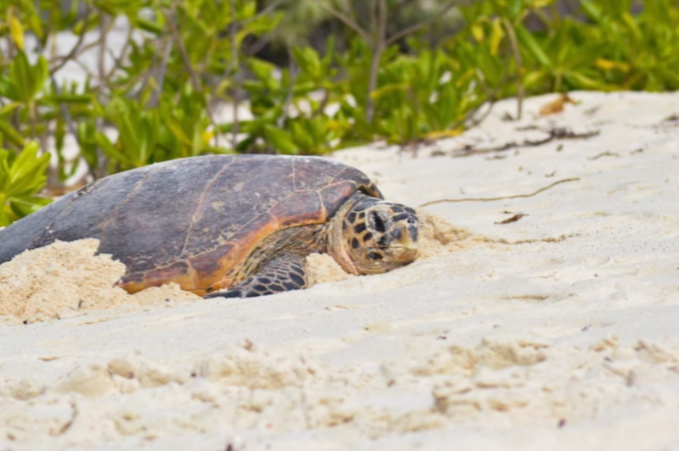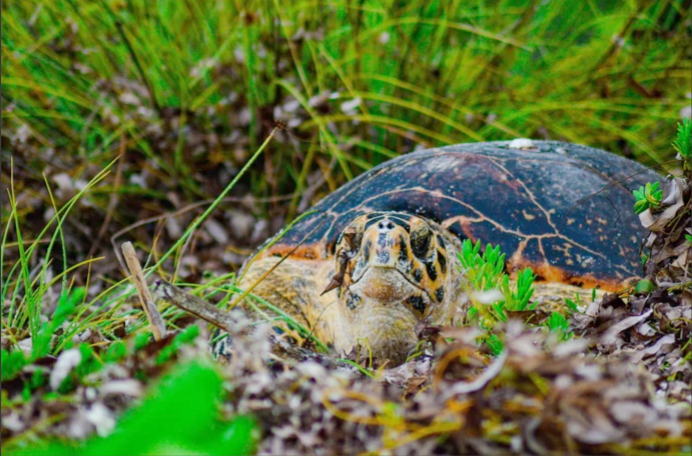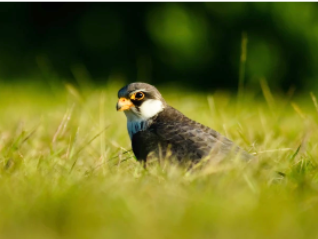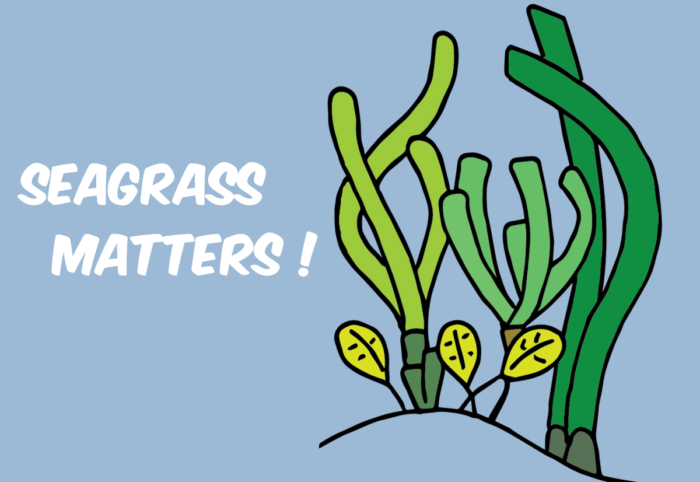Newsletter March 2020
Newsletter March 2020 – Birds, Turtles & More
Sustaining all life on Earth
“Since time immemorial, we have used wild plants and animals for our most basic needs: from the air we breathe, to the food we eat, to the materials we use for shelter and comfort. The human well-being and prosperity that is derived from the direct exploitation of wildlife, habitats and ecosystems should not be to the detriment of the building blocks of a rich and diverse biosphere.”
| – Ivonne Higuero, Secretary General of CITES (Convention on International Trade in Endangered Species of Wild Fauna and Flora), World Wildlife Day, March 3rd 2020. |
| For the custodians of Bird Island this all starts with preserving the natural environment, something they have been doing since the lodge opened in the 1970s. With the creation of the Bird Island eco-lodge and its conservation work, the protection of the island and the natural wildlife could be ensured. Today, Bird Island is home to a thriving seabird colony of Sooty Terns, sea turtles that nest on the island’s shores, along with other amazing wildlife. Visitors to the lodge are able to experience this whilst the livelihoods of many are maintained. We hope that Bird Island continues to serve as a guide in the balance between man and the natural environment. Now, what’s been happening on our little island? Read on to find out. |
Sea Turtles
It has been a very busy turtle nesting season here on Bird Island. These lovely creatures were emerging almost every day with this activity only slowing down about a week ago! Luckily, we had an extra pair of hands during this time. Volunteer, Sam Cooper, whom we welcomed in December has been a welcome addition to the team. Like Bea Barclay, who assisted us earlier on, Sam is a budding naturalist. After visiting the island last year, following a stint with Global Vision International, he kindly offered us his services. It’s been great seeing him around, patrolling the island during this exciting monitoring period.

What do the numbers say?
| From the data collected we can see that in the 2018/19 season the Green turtle nesting numbers were exceptional. Between the period 21st August and 5th March we recorded 146 nests whereas in the same period of the 2019/20 season just 29 were recorded. This does not reflect the entire monitoring period but is a good indicator that the 2018/19 season was definitely a peak year. In comparison, the Hawksbill numbers are relatively similar from year to year. Nests recorded between 21st August and 5th March of 2018/19 were 254 and 273 in the same period of the 2019/20 season. |
Memorable turtle encounters
| As we all know wildlife can sometimes find themselves in distress. A female turtle found herself in such a situation not long ago where she had completely wedged herself into a bush far inland, at the northern point of the island. On approach we feared that she had already perished since her head was drooped and was motionless. With a bit of determination however, we gained access to her and proceeded to try and free her from her predicament. She was kept cool with a regular dousing of sea water whilst doing our best to clear a path for her out of the bush. The rescue took almost an hour but she finally found her way back to the sea. We’d like to thank our Conservation Officer’s daughter, Isla Rose, who was on hand to run up and down the beach and continuously re-fill a bottle with sea water for the turtle. It was truly rewarding, a few days later when we encountered the same turtle nesting in a much more sensible spot on the island’s West Beach. |

Photo: Sea Turtles by Sam Cooper, Bird Island Seychelles
Sea turtle survival
Did you know that turtle nests sometimes have to be relocated? There are a number of valid reasons to relocate a nest. The threat of erosion by wave action, constant flooding, predation of a nest by crabs and disturbance of a nest. This could be by human activity or by other wildlife. Recently, we had a case where a nest was accidentally dug up by another nesting female. A very important part of Bird Island’s conservation work is where intervention is required for the survival of turtle hatchlings. We have had to carry out a number of emergency relocations in the last month. A proud moment was when a bunch of Green Turtle hatchlings emerged from a nest relocated earlier in the season.
Bird Sightings

Photo: Amur Falcon by Sam Cooper, Bird Island, Seychelles
In addition to our more regular visitors, the interesting sightings lately include:
- 68 Saunders’ Terns (Sterna saundersi) A
- 3 Pacific Golden Plovers (Pluvialis fulva) A
- 3 Bar-Tailed Godwits (Limosa lapponica) A
- 3 Common Snipes (Gallinago gallinago) V
- 1 Blue-Cheeked Bee-Eater (Merops persicus) V
- 1 Corncrake (Crex crex) V
- 1 Amur Falcon (Falco amurensis) V
- 1 Rosy Starling (Sturnus roseus) V
The most exciting of all was the Rosy Starling! This bird was spotted on the 31st January by guest Craig Nisbet. It is only the second record of such a bird on the island. There are only 5 previously accepted records of Rosy Starlings in the Seychelles by the Seychelles Bird Records Committee.
A = Annual Migrant V = Vagrant
It’s Seagrass Awareness Month!
The importance of seagrass is often overlooked. We fail to see the vital role it plays in helping to maintain a healthy marine eco-system. Seagrasses act as nurseries, providing food and shelter for juvenile fish, crustaceans and other marine life. They are a very important food source. This is why you find so many turtles in the waters surrounding Bird Island. Seagrass beds support fisheries and also store carbon in their soils. Healthy meadows slow down water currents and reduce wave action, preventing erosion and building coastlines.

We experienced a very strong storm surge in early December which brought an unusually large amount of seagrass and seaweed up onto the beaches. We are now in March and some remains on the East coast. The advantage of these wrack lines (washed up seaweed and seagrass) is that they provide the beach great natural protection from erosion. Normally, high spring tides will gradually clear the beaches of these wrack lines.
How do this year’s wrack lines compare to those of last year? Find out here!
‘Blue carbon workshop – State of knowledge of seagrass habitats in Seychelles’
Our Conservation Officer Jo was invited by SeyCCAT to attend a two day workshop earlier this month. The topic was the current state of the knowledge of seagrass habitats in the Seychelles. It has been established that these habitats are of great importance to the Blue carbon economy. This has resulted in an interest in mapping the seagrass beds in the archipelago. There is a possibility that Bird Island will get involved in the project. Stay tuned!
Thank you for reading our Newsletter for March 2020!
May 12, 2020 4:03 pm
Comments are closed here.